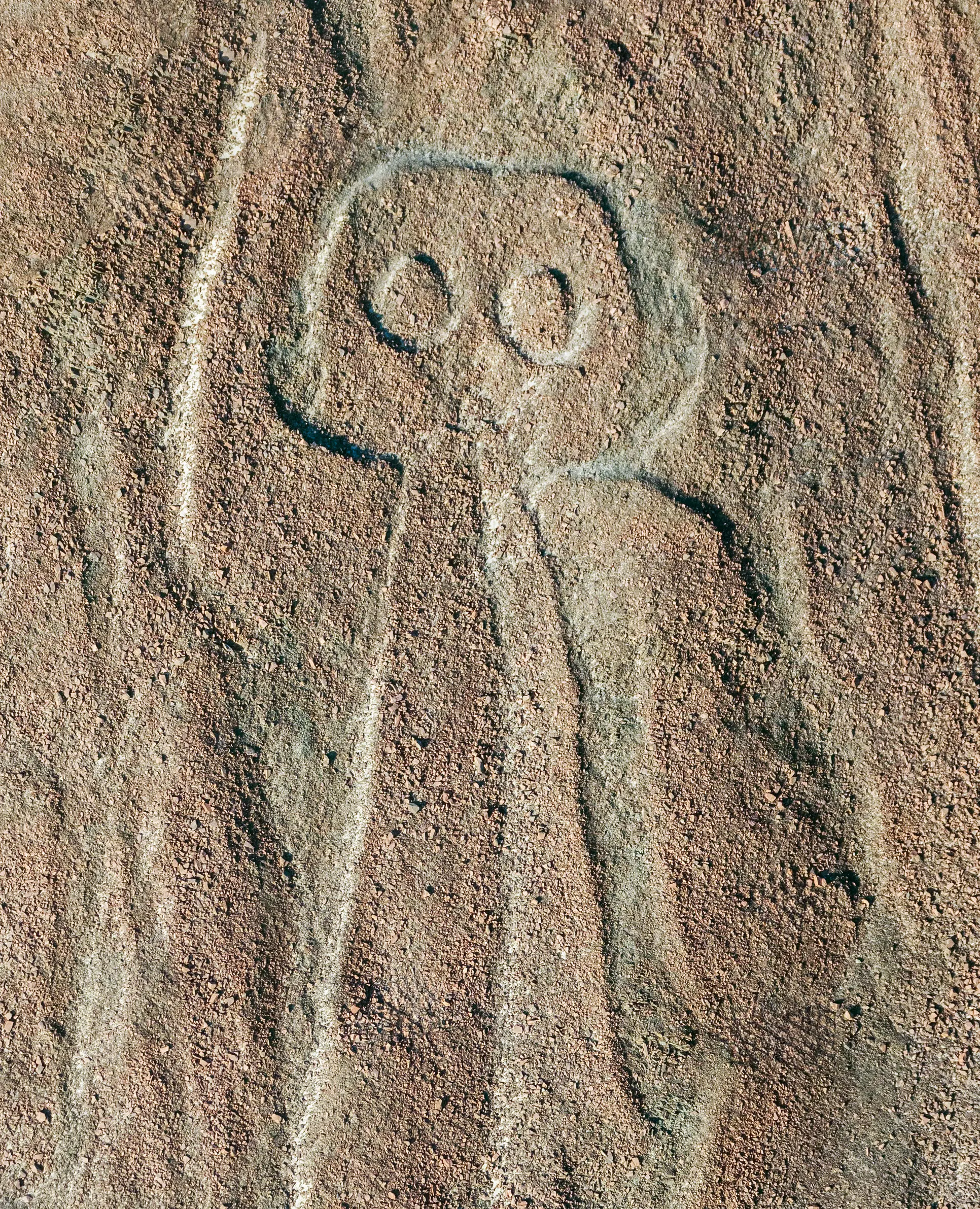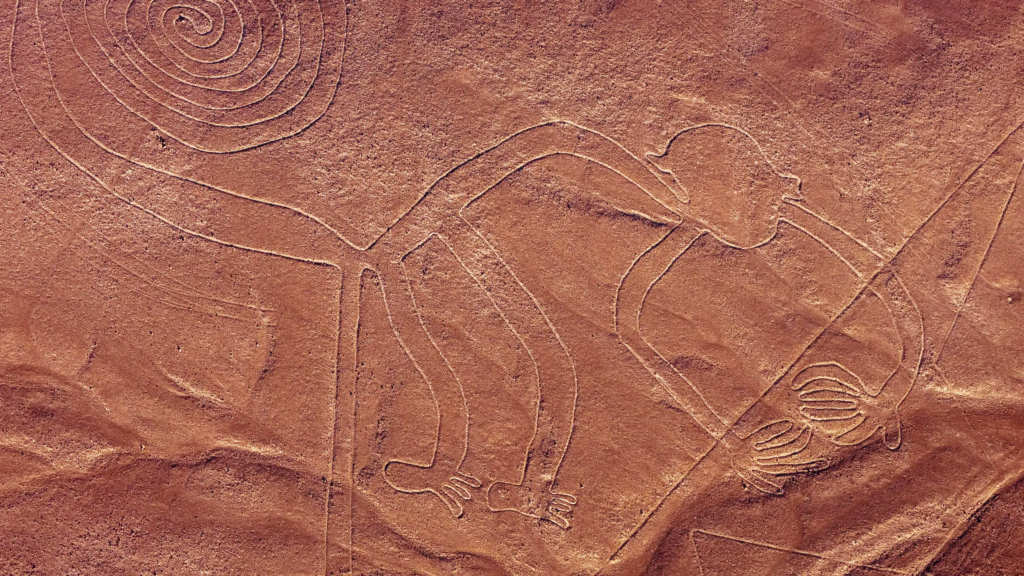Introduction
The Nazca Lines, etched across the arid plains of southern Peru, stand as one of the most perplexing archaeological mysteries in the world. Enigmatic geoglyphs, these colossal figures and intricate lines were created by the Nazca people, a pre-Columbian civilization that thrived between 200 BCE and 600 CE. The purpose and significance of these geoglyphs have baffled researchers, sparking numerous theories and debates. This essay delves into the history of the Nazca Lines, exploring the culture that gave rise to these massive formations, and delving into the possible functions and meanings behind these ancient wonders.
History of the Nazca Culture
The Nazca civilization emerged in the Nasca Valley, a region characterized by a lack of water and arid conditions. Flourishing between the decline of the Paracas culture and the rise of the Moche civilization, the Nazca people adapted to their challenging environment and left an indelible mark on the landscape in the form of the Nazca Lines. The Nazca civilization was agriculturally advanced, utilizing sophisticated irrigation systems to cultivate the desert land.
The creation of the lines is believed to have spanned several centuries, with most geoglyphs dating back to the Early Nazca period (200 BCE – 500 CE). The lines and figures were etched into the ground by removing the reddish-brown iron oxide-coated pebbles to reveal the light-coloured earth beneath. Despite the passage of centuries and the harsh desert conditions, the lines have endured, maintaining their enigmatic presence.
Iconic Geoglyphs
The Nazca Lines consist of over 800 straight lines, geometric shapes, and zoomorphic figures, such as animals and birds. The geoglyphs vary in size, with some reaching lengths of over 1,000 feet. The precision and scale of these formations suggest a remarkable level of planning and organization by the Nazca people.
Among the most famous figures are the Hummingbird, Spider, and Condor, each meticulously designed with an accuracy that is astonishing considering the lack of modern surveying tools. The lines connect these figures, crisscrossing the desert in a seemingly chaotic but purposeful manner. The sheer scale and intricacy of the Nazca Lines have fuelled speculation about the methods employed by the Nazca people to create these colossal works of art.
Possible Functions and Purposes
The Nazca Lines have intrigued scholars, archaeologists, and enthusiasts alike, leading to a multitude of theories regarding their purpose. While the true intent of the Nazca people remains elusive, several compelling hypotheses have emerged over the years.
1. Astronomical Alignments
Some researchers propose that the Nazca Lines served as an intricate astronomical calendar, aligning with celestial events such as solstices and equinoxes. The geoglyphs’ orientation and alignment with celestial bodies could have held religious or agricultural significance, guiding the Nazca people in their seasonal activities.
2. Ritualistic Practices
Another theory posits that the lines were utilized for ceremonial or ritualistic purposes. The geoglyphs may have functioned as sacred paths or processional routes, leading the Nazca people to specific ceremonial sites. The figures themselves, often depicting animals and mythical creatures, could have held spiritual significance within the Nazca belief system.
3. Water Management
Given the Nazca civilization’s reliance on sophisticated irrigation systems, some researchers suggest that the lines and figures may have been markers for underground water sources. The Nazca people might have used the geoglyphs to signify locations where water could be found, aiding in agricultural planning and settlement development.
4. Social and Cultural Signifiers
The Nazca Lines may have also served as symbols of social and cultural identity. Certain geoglyphs may have represented different Nazca clans or tribes, acting as territorial markers or emblems of group affiliation. This theory aligns with the notion that the Nazca Lines were a communal effort, fostering a shared sense of identity among the Nazca people.
Conclusion
The Nazca Lines continue to captivate the imagination, standing as an enduring testament to the ingenuity and creativity of the ancient Nazca civilization. As researchers strive to unlock the mysteries behind these enigmatic geoglyphs, the true purpose and function of the Nazca Lines remain elusive. Whether they served as astronomical calendars, ritualistic pathways, water management tools, or cultural symbols, the Nazca Lines persist as an archaeological marvel that defies easy explanation.
The study of the Nazca Lines not only sheds light on the technological prowess of the Nazca people but also underscores the interconnectedness of culture, environment, and spirituality in ancient civilizations. As ongoing research and technological advancements provide new insights into these colossal formations, they will likely continue to spark fascination and debate, ensuring their place as one of the most intriguing mysteries of our archaeological heritage.

Geolocation: -14.738699, -75.129956
Further Reading: Coming Soon
Photo Credits: Monika Neumann, Diego Delso
Introduction
The Nazca Lines, etched across the arid plains of southern Peru, stand as one of the most perplexing archaeological mysteries in the world. Enigmatic geoglyphs, these colossal figures and intricate lines were created by the Nazca people, a pre-Columbian civilization that thrived between 200 BCE and 600 CE. The purpose and significance of these geoglyphs have baffled researchers, sparking numerous theories and debates. This essay delves into the history of the Nazca Lines, exploring the culture that gave rise to these massive formations, and delving into the possible functions and meanings behind these ancient wonders.
History of the Nazca Culture
The Nazca civilization emerged in the Nasca Valley, a region characterized by a lack of water and arid conditions. Flourishing between the decline of the Paracas culture and the rise of the Moche civilization, the Nazca people adapted to their challenging environment and left an indelible mark on the landscape in the form of the Nazca Lines. The Nazca civilization was agriculturally advanced, utilizing sophisticated irrigation systems to cultivate the desert land.
The creation of the lines is believed to have spanned several centuries, with most geoglyphs dating back to the Early Nazca period (200 BCE – 500 CE). The lines and figures were etched into the ground by removing the reddish-brown iron oxide-coated pebbles to reveal the light-coloured earth beneath. Despite the passage of centuries and the harsh desert conditions, the lines have endured, maintaining their enigmatic presence.
Iconic Geoglyphs
The Nazca Lines consist of over 800 straight lines, geometric shapes, and zoomorphic figures, such as animals and birds. The geoglyphs vary in size, with some reaching lengths of over 1,000 feet. The precision and scale of these formations suggest a remarkable level of planning and organization by the Nazca people.
Among the most famous figures are the Hummingbird, Spider, and Condor, each meticulously designed with an accuracy that is astonishing considering the lack of modern surveying tools. The lines connect these figures, crisscrossing the desert in a seemingly chaotic but purposeful manner. The sheer scale and intricacy of the Nazca Lines have fuelled speculation about the methods employed by the Nazca people to create these colossal works of art.

Possible Functions and Purposes
The Nazca Lines have intrigued scholars, archaeologists, and enthusiasts alike, leading to a multitude of theories regarding their purpose. While the true intent of the Nazca people remains elusive, several compelling hypotheses have emerged over the years.
1. Astronomical Alignments
Some researchers propose that the Nazca Lines served as an intricate astronomical calendar, aligning with celestial events such as solstices and equinoxes. The geoglyphs’ orientation and alignment with celestial bodies could have held religious or agricultural significance, guiding the Nazca people in their seasonal activities.
2. Ritualistic Practices
Another theory posits that the lines were utilized for ceremonial or ritualistic purposes. The geoglyphs may have functioned as sacred paths or processional routes, leading the Nazca people to specific ceremonial sites. The figures themselves, often depicting animals and mythical creatures, could have held spiritual significance within the Nazca belief system.
3. Water Management
Given the Nazca civilization’s reliance on sophisticated irrigation systems, some researchers suggest that the lines and figures may have been markers for underground water sources. The Nazca people might have used the geoglyphs to signify locations where water could be found, aiding in agricultural planning and settlement development.
4. Social and Cultural Signifiers
The Nazca Lines may have also served as symbols of social and cultural identity. Certain geoglyphs may have represented different Nazca clans or tribes, acting as territorial markers or emblems of group affiliation. This theory aligns with the notion that the Nazca Lines were a communal effort, fostering a shared sense of identity among the Nazca people.

Conclusion
The Nazca Lines continue to captivate the imagination, standing as an enduring testament to the ingenuity and creativity of the ancient Nazca civilization. As researchers strive to unlock the mysteries behind these enigmatic geoglyphs, the true purpose and function of the Nazca Lines remain elusive. Whether they served as astronomical calendars, ritualistic pathways, water management tools, or cultural symbols, the Nazca Lines persist as an archaeological marvel that defies easy explanation.
The study of the Nazca Lines not only sheds light on the technological prowess of the Nazca people but also underscores the interconnectedness of culture, environment, and spirituality in ancient civilizations. As ongoing research and technological advancements provide new insights into these colossal formations, they will likely continue to spark fascination and debate, ensuring their place as one of the most intriguing mysteries of our archaeological heritage.

Geolocation: -14.738699, -75.129956
Further Reading: Coming Soon
Photo Credits: Monika Neumann, Diego Delso
